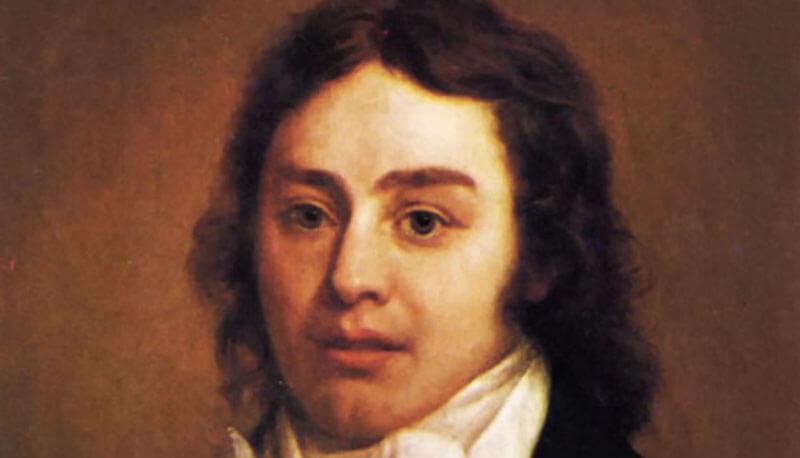Concetti Chiave
- The poem 'Rime of the Ancient Mariner' is a long narrative ballad divided into seven sections, each with an introductory summary and captions to explain the content.
- The mariner's tale begins with him stopping a wedding guest, compelling him to listen, displaying an eerie, hypnotic presence that captures the guest's attention.
- The narrative contrasts man-made objects with natural elements like storms and ice, which are personified to symbolize power and mystery.
- The Albatross, symbolizing nature's benign spirit, is killed senselessly by the mariner, invoking Christian imagery and themes of sin and redemption.
- The poem can be interpreted religiously as a journey of self-awareness through sin, or secularly as a metaphor for the poet's social alienation.
The 'Rime of the Ancient Mariner' is a ballad, i.e., a long narrative poem divided into seven sections. Each section is introduced by an 'argument', that is, a summary of the content of the section which follows, and each section contains a poetic part and captions. Captions are meant to clarify to the reader the content of the poetic part.
As you can see, there is an effort on the poet's part to make his narrative more credible and acceptable as he himself states in 'Biographia Literaria' when he illustrates his concept of 'the suspension of disbelief'.
The extract ' The Killing of the Albatross' starts with the ancient mariner who is stopping a wedding-guest on his way to the wedding feast and obliges him to listen to him.
There is something magic and weird in the old man, his glittering eyes have hypnotic power and his skinny hands and long beard make him more like a specter than a human living creature.
The wedding guest is reluctant and disappointed, he would like to join the wedding feast but he is 'spell-bound' and he 'cannot choose but hear'.
Partenza della nave
The Ancient Mariner starts his tale from when the ship leaves the harbor bound southwards. Let's notice the presence of man-made things as the harbor itself, the church and the lighthouse. Their presence contrasts with the description of natural elements as the storm, the ice, the snow and the mist which, later on in the narration, are charged with symbolic meaning.
In line 41, the 'storm-blast came', as the poet says and 'it was tyrannous and strong. It is represented as a huge bird chasing the ship with its large wings. The storm is personified through the use of personal pronouns, adjectives and verbs.
Next mist, snow and ice come.

Arrivo dell'Albatross
The ice surrounds the ship and traps it; the sensation we have is one of impotence and paralysis; the ice is personified through the use of verbs as 'growling, roaring and howling' which are generally attributed to wild, fierce animals.
The mist and snow increase the atmosphere of mystery and uncertainty.
Finally, out of nowhere, comes the Albatross.
It represents the benign spirit of nature and this makes its killing even more absurd.
For no reasons at all, the ancient mariner shoots it with his cross-bow.
Notice the references to the Christian religion and Jesus Christ in line 65 'as if it had been a Christian soul' and line 81 'With my cross-bow...'
Line 81, in particular, reminds us of Jesus Christ's sacrifice on the cross.
Interpretazioni religiose e secolari
The religious interpretation of 'The Rime' says that it is a process of self-knowledge through sin and expiation. The mariner's punishment for his sin against God's creation is that he feels obliged to go from place to place and tell the people he meets about what happened. The aim is to teach them to love all of God's creatures.
There is also a secular interpretation of 'The Rime' which focuses on the mariner as the emblem of the poet's isolation and alienation from society.
per approfondimenti vedi anche:
Coleridge, Samuel Taylor - Life
Coleridge, Samuel - Life and Works
Coleridge, Samuel Taylor - Biography
Coleridge, Samuel Taylor - Imagination and fancy
Coleridge, Samuel Taylor - Vita e opere principali
Domande da interrogazione
- Qual è il significato simbolico dell'Albatros nel poema?
- Come viene descritta la tempesta nel poema?
- Qual è il ruolo della religione nel 'Rime of the Ancient Mariner'?
- Qual è l'effetto della natura sulla nave e sull'equipaggio?
- Qual è l'interpretazione secolare del marinaio antico?
L'Albatros rappresenta lo spirito benigno della natura, e il suo uccisione da parte del marinaio antico è vista come un atto assurdo e senza motivo, simbolizzando un peccato contro la creazione di Dio.
La tempesta è personificata come un enorme uccello che insegue la nave con le sue grandi ali, descritta come tirannica e forte, utilizzando pronomi personali, aggettivi e verbi.
La religione gioca un ruolo cruciale, con riferimenti al sacrificio di Gesù Cristo e l'interpretazione religiosa del poema come un processo di auto-conoscenza attraverso il peccato e l'espiazione.
La natura, attraverso il ghiaccio, la nebbia e la neve, crea un'atmosfera di impotenza e paralisi, aumentando il mistero e l'incertezza che circondano la nave e il suo equipaggio.
L'interpretazione secolare vede il marinaio come l'emblema dell'isolamento e dell'alienazione del poeta dalla società, riflettendo la condizione esistenziale del poeta stesso.







 Accedi a tutti gli appunti
Accedi a tutti gli appunti
 Tutor AI: studia meglio e in meno tempo
Tutor AI: studia meglio e in meno tempo